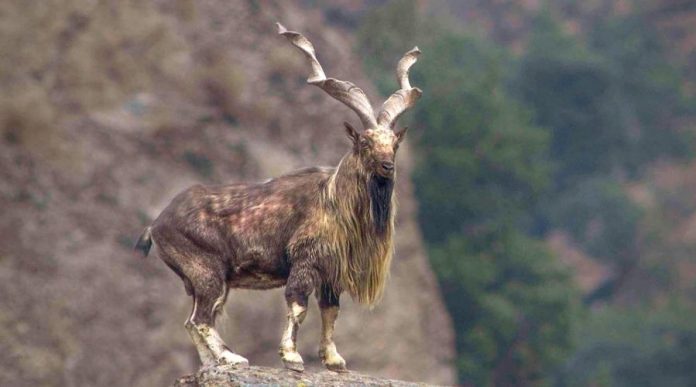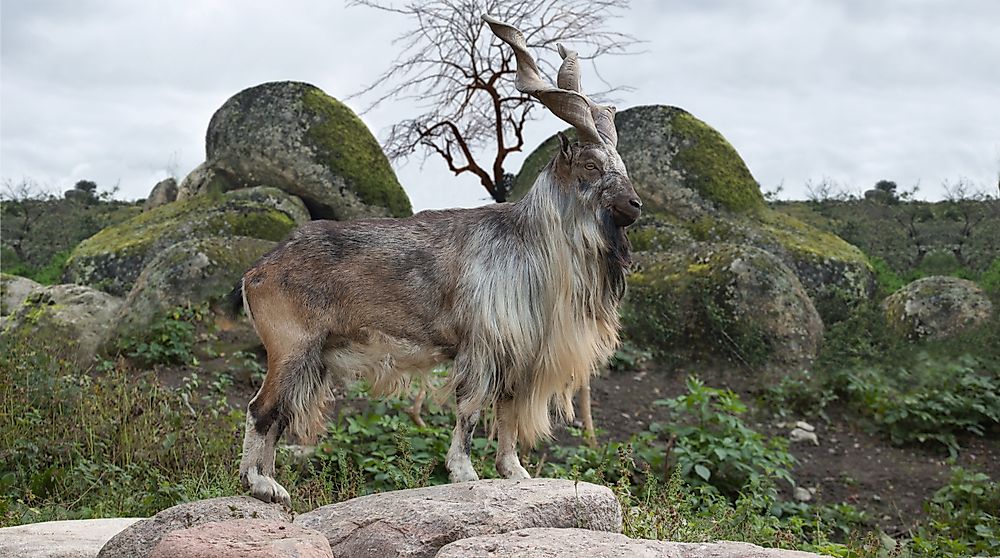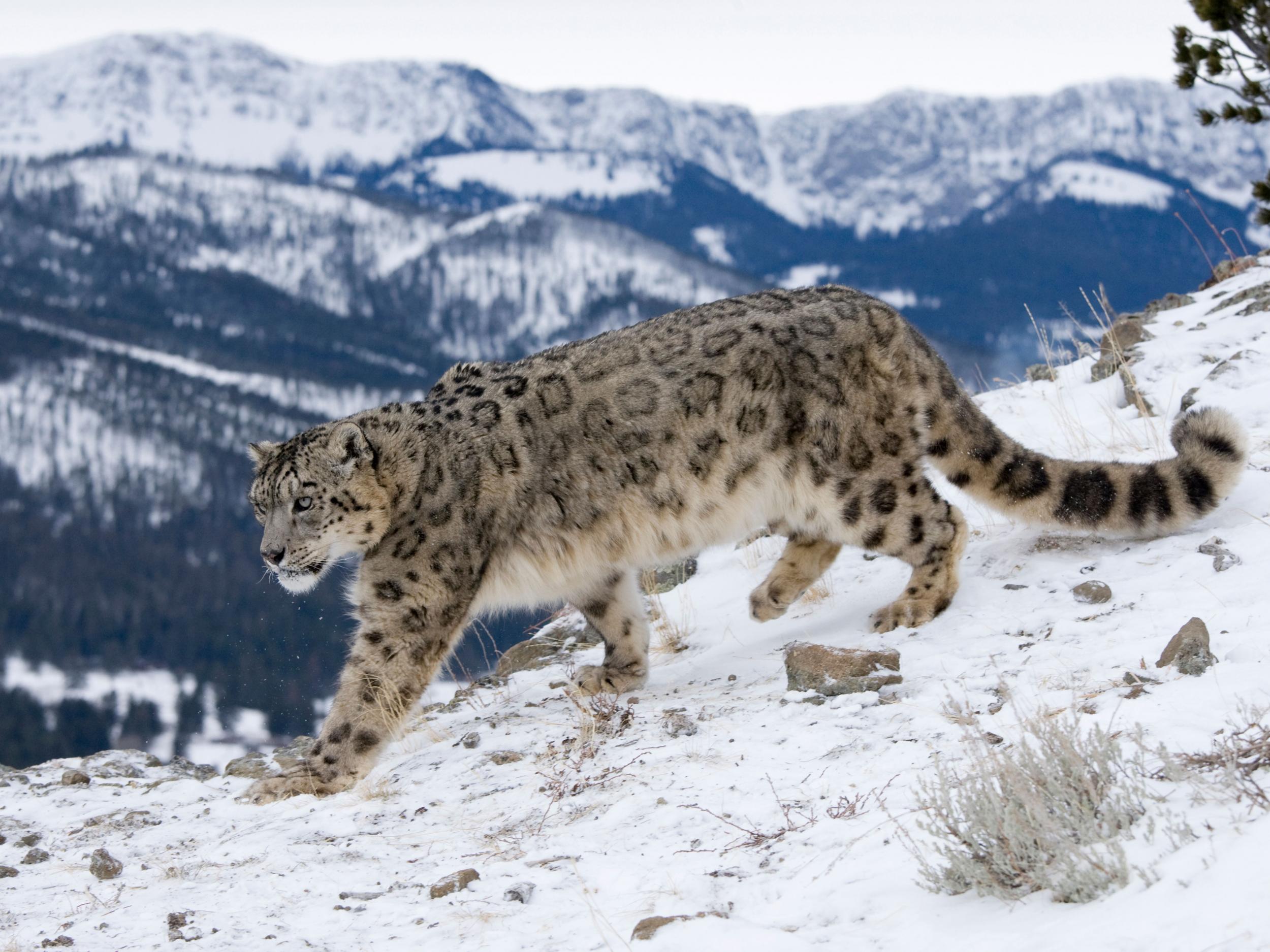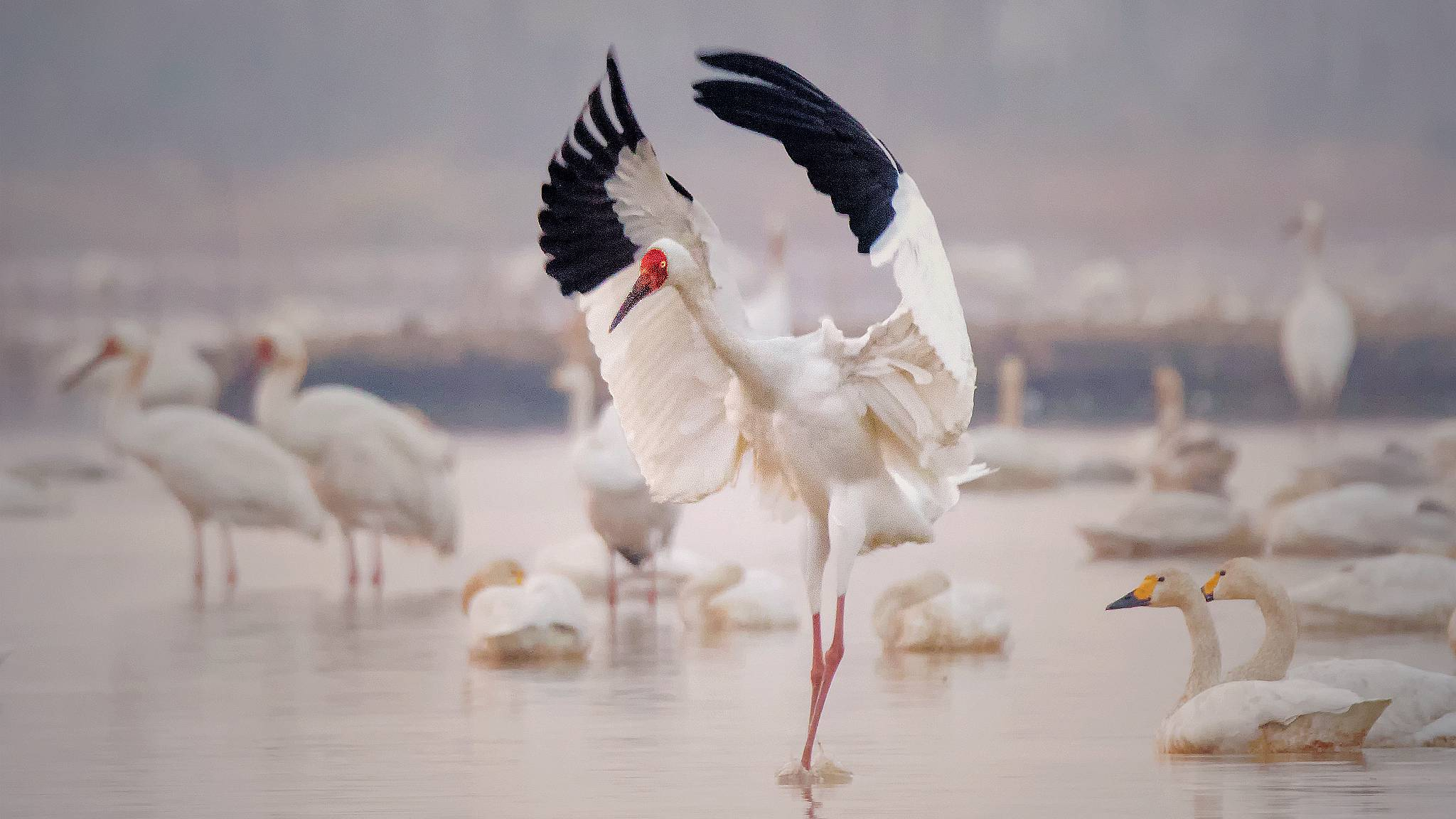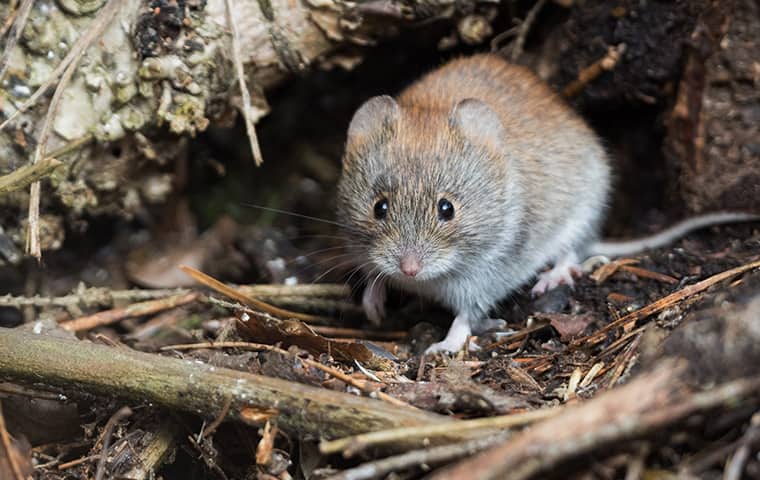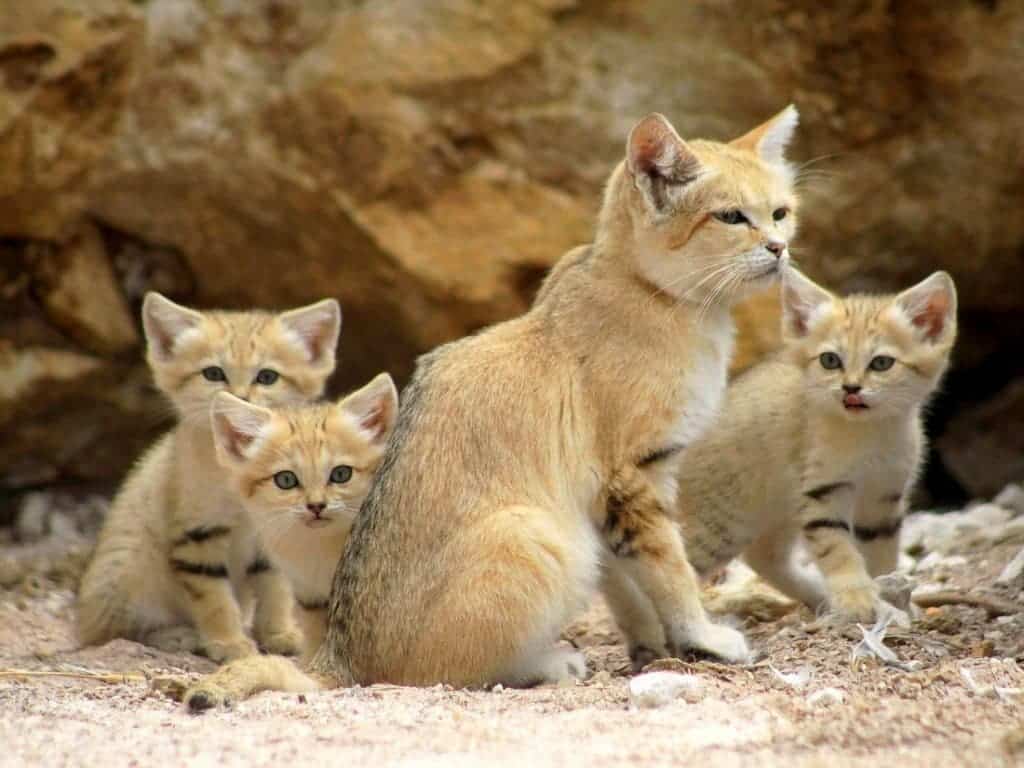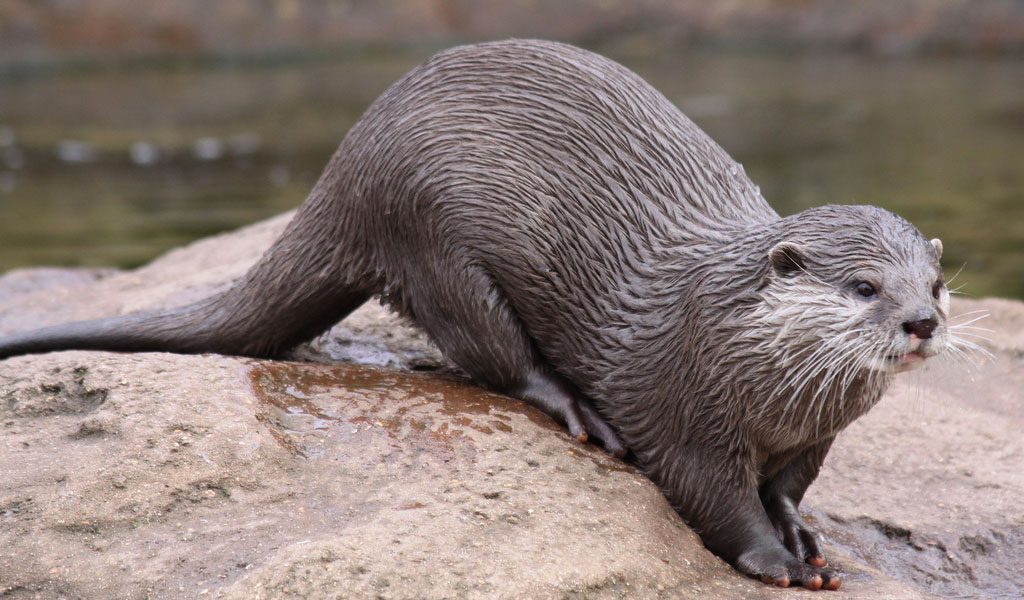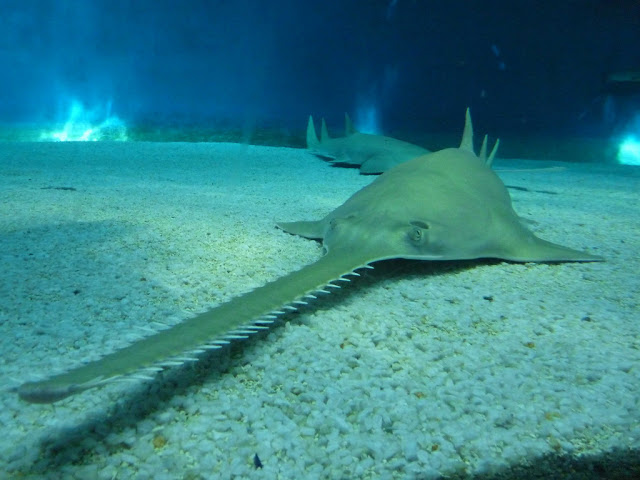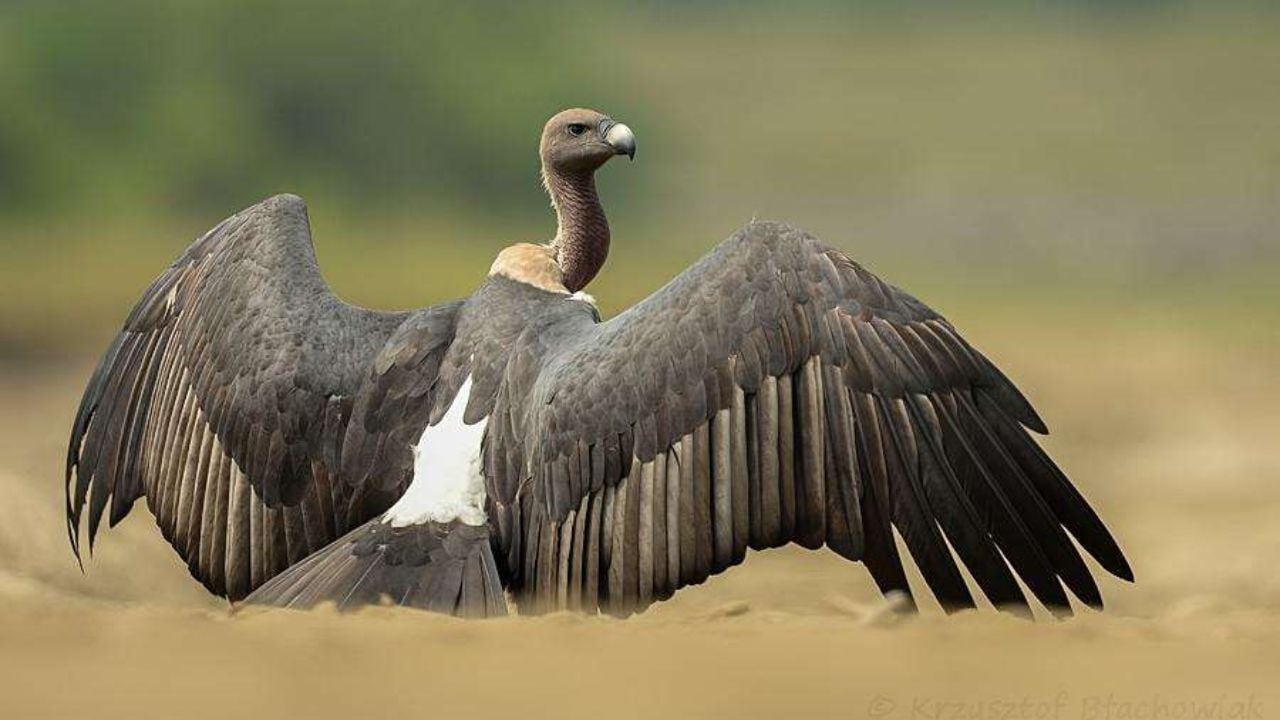It may seem irrelevant that why we worry about some animals getting extinct, but in reality all species matter because they are connected through their interactions in a web of life. A balanced and bio-diverse ecosystem is one in which each species plays an important role and relies on the services provided by other species to survive. Healthy ecosystems are more productive and resistant to disruptions.
Some of the animals extinct due to the natural occurrence such as climate change or rising water level, but for most of them humans are the convicts. Habitat destruction as farming land expands and forests are cut-down is the main cause of modern extinctions, along with pollution, the introduction of alien species, and over fishing or hunting.
This is all also happening in Pakistan and we need to preserve these animals from getting extinct. Following is the list of animals which are on the verge of extinction.
Ibex (Markhor):
Yeah, Pakistan’s National Animal is also about to extinct and we Pakistanis are the one to blame for this. But there’s some good news as well, due to positive response from the authorities in 2015, it was found out that their population has increased by 20%.
Indus River Blind Dolphin:
Due to the construction of dams and water storage and collection reservoirs Indus River Blind Dolphin is on the verge of extinction. These dolphins are the most globally recognised water animal Pakistan have.
Kashmir Musk Deer:
Kashmir Musk Deer is native to Pakistan, India and Afghanistan, but it in all these countries the number of these are at the most threatening mark. It is all due to unregulated hunting, extensive deforestation, habitat degradation, and the absence of the rule of law.
Caracal:
Caracal is native to South Asia and Middle East, it is medium sized cat which is currently declared as endangered in Pakistan. The cause of its endangerment is urban development, rapid deforestation and excessive hunting.
Snow Leopard:
The reports from International Union for the Conservation of Nature says that, as of 2003, the size of the global population of this beauty was estimated at 4,080–6,590 adults, of which fewer than 2,500 individuals may reproduce in the wild. All due to excessive hunting and rapid human expansion.
Siberian Cranes:
Siberian Cranes are native to eastern Russia, but in winters they migrate to Pakistan, India and China. They prefer fresh water with wide expenses and great visibility. Due to severe negligence by the people, they are also getting extent. Few years back they were seen commonly in Pakistan but now due to the water pollution they rarely sighted.
Balochistan Forest Darmouse:
The Balochistan forest dormouse is found in Juniper Forest of Ziarat, however deforestation has caused decrease in their population and they are on the verge of extinction.
Asian Black Bear:
This beast is considered as an hunting trophy, this is one of the main reasons that very few bears of this kind are found in Pakistan. Another main reason for its dangerous numbers is people settling into wildlife territories endangering their numbers and affecting their habitats.
Black Finless Porpoise:
this species is commonly found throughout the coast especially in mangroves. The species is classified as vulnerable on the IUCN Red list, due to the discharge of highly toxic effluents from the Lyari and Malir rivers into the sea.
Burrowing Vole:
The species is endemic to Kashmir and KhyberPakhtunkhwa regions. Depletion of habitat due to livestock grazing and human activities are the major threats to this species.
Sand Cat:
As its name implies the sand cat is commonly found in sandy desert areas. In Pakistan it is found in Balochistan’sChagai desert. It was devastated by commercial collectors within 10 years after foreign collectors became aware of its existence, more recent information indicates that the sand cat still occurs widely in the area. But, still the Sand Cat is rare in Pakistan and is only found in the Chagai desert.Its exact population is unknown but the Sand Cat is considered endangered and will not survive until stronger wildlife laws are put in to place to stop it’s export from Pakistan.
Marco Polo Sheep:
It is the largest subspecies of Argali sheep found in China, Tajikistan, Pakistan and Afghanistan and is the flagship species of Pamir Mountains. According to the IUCN red list 2008 the Marco polo sheep is considered as endangered species due to the habitat loss, over hunting or illegal shooting and limited resources.
Fishing Cat:
The fishing cat is mainly feeds on snakes, frog, fish, rodents, wild pigs and young deer etc. Fishing cat is mainly found in dense vegetation near stream and rive and tropical dry forest. The population of fishing cat threatened due to over farming, use of chemical fertiliser, drainage issue and over fishing by human.
Smooth Coated Otter:
The smooth coated otter lived in Pakistan, Bangladesh, Nepal and India. Mostly, the smooth coated otter is endangered due to loss in wetland habitat. The Otter’s habitat is lost due to the conversion of wetlands for settlement and agriculture, contamination of waterways by pesticides and large scale hydroelectric projects.
Green Sea Turtles:
The numbers of Green Sea Turtles are getting low day by day due to the horrid climate made by man. According to international law, no one can collect, kill or harm them but who cares in Pakistan. Their shells and skins are sold at high prise in the black market.
Bigeye Tuna:
Bigeye Tuna is getting extinct day by day but still they are brutally killed because it is important for food. Other factors affecting its numbers include massively increasing uncontrollable pollution.
European Otter:
It is a water animal, you would have guessed easily why very few of them are remaining. Yes, you’ve guessed it right, due to the water pollution.
Mountain Weasel:
This creature is mainly found in Kashmir. Some threats causing the Weasel to be considered near threatened include habitat change, mainly caused by human development, and other dangers, such as traffic on roads, which can reduce their population. Overgrazing by cattle, goats, and sheep causes the prey of the weasel to diminish because their hiding spots and food are reduced.
Sawfish:
Sawfish also known as Carpenter fish was listed by IUCN as “critically endangered,” while other species are “endangered.” It has reported that no Sawfish has reportedly seen in Pakistani waters for over two years. WWF-P has reported that it has now been extinct in Pakistani premises.
Long Billed Vultures:
Although vultures are considered as sinister but it plays a vital part in ecological landscape of Pakistan. In the 1990s they were declined rapidly because of the deadly effect of the cattle drug diclofenac. The birds died after eating carcasses contaminated with the drug. But now their numbers are stabling, still they are endangered species.























